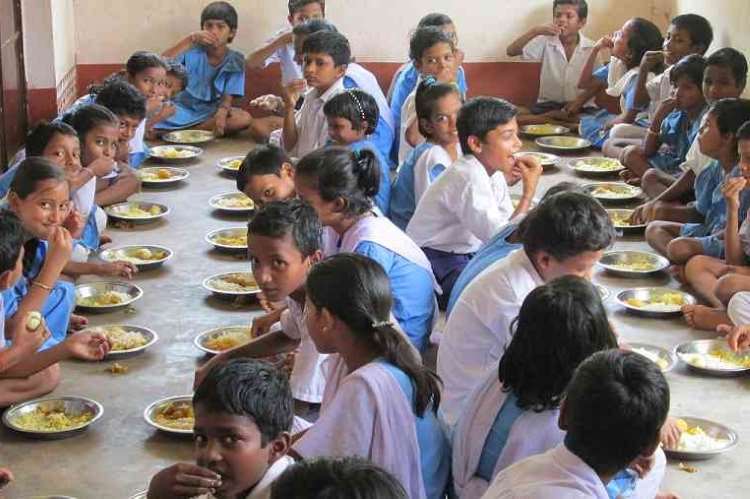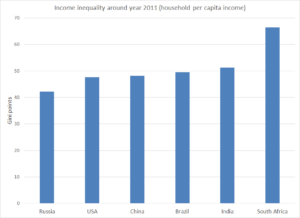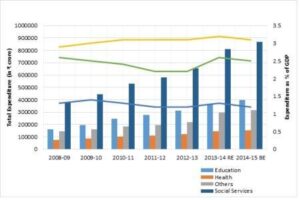
India has emerged as a global economic powerhouse in the last two decades, projecting an image of rapid growth and increasing prosperity on the global stage. However, this growth narrative masks a stark reality: India is also one of the world’s most unequal societies. Despite India’s impressive economic achievements, a significant portion of its population remains ensnared in poverty, unable to benefit from the nation’s economic advancements.
Reports from several sources including the World Inequality Lab paint a troubling picture of the disparity. A study co-authored by Thomas Piketty revealed that India’s current income inequality is more pronounced than it was under British colonial rule. Today, the top 1% of the population holds an astonishing 22.6% of the nation’s income and 40.1% of its wealth, marking a sharp increase from the figures recorded in previous decades. The rise of billionaires in India—increasing from a mere one in 1991 to 162 in 2022—mirrors this growing chasm, where the rich continue to amass wealth at an exponential rate while the majority struggle to make ends meet.
READ I Mining industry must rethink water management practices
An unequal society
Historically, India has been an unequal society because of the oppressive caste system that limited access to resources. During the British colonial era, wealth was concentrated in the hands of a small colonial elite and the allied Indian aristocracy. Post-independence, efforts like land reforms initially aimed to redistribute wealth more equitably. However, the liberalisation and globalisation policies initiated in the 1990s marked a significant turning point.
These policies catalysed India’s economic growth but also led to a sharp increase in inequality. The post-liberalisation era, particularly under recent administrations, has seen the rapid proliferation of billionaires and a corresponding increase in the wealth and income share held by the top 1% of the population. This modern concentration of wealth, surpassing even colonial disparities, reflects deep structural issues within the Indian economy that continue to challenge equitable growth.

The last decade has seen an unprecedented increase in the number of billionaires, with the latest data revealing a leap to 271 billionaires in India, including 94 new entrants in just one year. This surge is a reflection of an economic environment that increasingly favours massive wealth accumulation at the top.
While these billionaires celebrate their burgeoning fortunes, this wealth accumulation highlights the stark disconnect between the booming wealth of a few and the stagnant incomes of the majority. This phenomenon raises critical questions about the sustainability of growth that benefits a narrow slice of society, while the broader population struggles with basic economic security.
Institutionalised inequality
This disparity is not just numbers; it translates into real-world impacts on the Indian populace. The bottom half of the population is burdened disproportionately by indirect taxes, such as the goods and services tax, while direct taxes, which typically target higher income brackets, have decreased. This regressive tax structure exacerbates inequality, placing an undue burden on those least able to afford it.
The implications of such inequality extend beyond economic metrics; they touch the very fabric of societal wellbeing and stability. High inequality correlates with lower social mobility and higher rates of health and educational disparities. In India, these effects are palpable in the dismal rankings in global indexes for hunger and gender equality, and the severe impacts on healthcare accessibility, where millions are plunged into poverty due to medical expenses.
Need comprehensive, targeted reforms
Reform the tax system: India needs to revamp its tax system to make it more progressive. Equalising the tax rates between corporate entities and individuals can ensure a fairer distribution of the tax burden. Additionally, introducing wealth taxes for the ultra-rich can generate significant revenue, which can be reinvested into public services.
Invest in public services: The government must prioritise and increase investments in public health, education, and social security benefits. Universal access to these services can significantly reduce inequality by levelling the playing field and providing all citizens, regardless of their economic background, with the tools to improve their lives.
Govt spending on education, health, social protection

Strengthen social safety nets: Efficient cash transfer programmes that increase the purchasing power of the poorest can mitigate the immediate effects of poverty. Schemes like the Mahatma Gandhi National Rural Employment Guarantee Act (MGNREGA) should be expanded and better funded to ensure that more of the needy have access to these critical resources.
Promote inclusive policies: Land reforms and stronger regulations to curb crony capitalism are essential. These measures can help dismantle the unholy nexus between wealth and power that often stifles competition and entrepreneurship, key drivers of economic growth.
Corporate social responsibility: Private sector companies must be encouraged, if not mandated, to direct their CSR efforts towards real social change. This involves investing in community development, healthcare, education, and environmental sustainability.
Inequality threat to political stability
Beyond the economic ramifications, rising inequality poses significant risks to India’s political stability and governance. As the wealth gap widens, so too does the chasm between the elite and the masses, potentially leading to social unrest and diminished trust in institutions. The deep-seated nexus between affluent business magnates and political figures can lead to policies that favour the wealthy, perpetuating a cycle of inequality. To combat this, India must enforce stricter regulations on political funding and lobbying to ensure that governance is transparent and accountable to all citizens, not just the economically powerful.
Gender inequality remains a glaring issue in India, as evidenced by its poor ranking in the Global Gender Index. The economic disenfranchisement of women not only exacerbates overall income inequality but also hampers economic growth. Addressing this requires targeted policies to increase female labour market participation through educational scholarships, skill development, and legal reforms that ensure equal pay for equal work. Furthermore, addressing cultural and structural barriers that prevent women from entering or remaining in the workforce is crucial. Such measures will not only improve gender equality but also boost economic productivity by integrating more women into the formal economy.
Technology and innovation hold transformative potential to bridge gaps in income and wealth inequality. By leveraging technology, India can enhance access to quality education and healthcare services across remote and underserved regions, thus democratising opportunities. Initiatives such as digital literacy programmes and telemedicine services can significantly reduce barriers to education and health services, respectively. Furthermore, fostering a startup ecosystem that encourages innovation in low-income sectors can drive job creation and economic diversification, benefiting the broader population.
Inequality is not just a policy issue; it is a moral challenge that calls into question the very essence of our collective humanity and governance. India, at this juncture of its economic journey, faces a critical choice: to continue on a path that enriches a select few while leaving many behind, or to forge a new path that promises prosperity and dignity for all its citizens. The strategies outlined here are not just economic imperatives—they are steps towards building a fairer, more equitable society.
